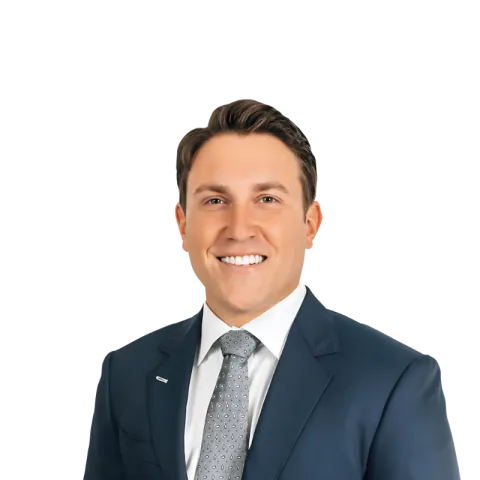
Impacted by a drowning accident?
Drowning accidents can cause unimaginable loss. We help families seek justice and accountability.
Start your claimThe attorney shown above may not be licensed in your state. To find an attorney licensed in your area, please visit our attorney page.

The attorney shown above may not be licensed in your state. To find an attorney licensed in your area, please visit our attorney page.
Meet Our Drowning Accident Attorneys
Our compassionate attorneys handle every detail of your case to seek justice.
The attorneys shown in these photos may not be licensed in your state. To find an attorney licensed in your area, please visit our attorney page.
Morgan & Morgan's Drowning Accident Lawyers Make All the Difference
Don’t Be Lowballed by an Insurance Company
Covering All Types of Drowning Accident Cases
Proven Experience, Powerful Results
Legal Help with No Upfront Costs
Results may vary depending on your particular facts and legal circumstances.
Our Results
Results may vary depending on your particular facts and legal circumstances.
Common Places Where Drowning Occurs
Resorts
Hotels
Pools
Water Parks
Private Residential Pools
Natural Bodies of Water
In Their Words
Based on select nationwide reviews.
Drowning accident cases need three things.
Injury or death
Proof of negligence
Establishment of liability
What to Do After a Drowning Accident
A drowning accident can be devastating. Learn the key steps to protect your rights, investigate liability, and seek justice for you or your loved one.
Fighting For the People
Backed by America’s Largest Injury Law Firm.
$25 Billion
Recovered for clients
nationwide700,000+
Clients and families
served1,000+
Attorneys across
the country1
Click may change your life

The attorney featured above is licensed in Florida. For a full list of attorneys in your state please visit our attorney page.
Results may vary depending on your particular facts and legal circumstances.
Types of Drowning Injuries
Anoxic Brain Injury
Secondary Drowning
Lung Damage
Cardiac Arrest
Death
Emotional and Psychological Trauma
Learn More
Injured and not sure what to do next?
We'll guide you through everything you need to know.
What should I do if a loved one is involved in a swimming pool or drowning accident?
If a loved one is involved in a drowning accident, acting quickly can make all the difference. Call 911 immediately and get emergency responders on the way as soon as possible. If it’s safe for you to do so, get them out of the water without putting yourself at risk.
If the drowning victim is not breathing, begin CPR. Start chest compressions and rescue breaths if they have no pulse.
Turn them on their side if coughing or vomiting—this prevents choking. Even if they regain consciousness, they may still need medical attention. Be sure to seek medical care immediately.
If the victim survives the incident, drowning can still cause secondary complications like dry drowning or infections. Be sure to follow up with all recommended treatments. Taking your treatment seriously also establishes a medical record used for evidence for insurance claims or lawsuits—so take your health care seriously for your safety and your personal injury claim.
If the drowning was due to negligence, such as lack of supervision or unsafe conditions, a personal injury lawyer may help. Consider your legal options and speak to an experienced attorney as soon as you are able to do so.
What is considered a drowning accident?
It’s important to note that drowning is a process—and not always fatal.
A drowning accident occurs when a person experiences respiratory impairment due to being submerged or immersed in water. When someone's head goes under water, their airways close off due to an automatic reflex called the laryngeal sphincter. Significant amounts of water usually only enter the lungs later in the process.
While often associated with death, drowning can also be a non-fatal experience, sometimes referred to as "near-drowning". The length of time a person is underwater, the water temperature, and the availability of immediate medical care all play a role in the outcome of a drowning incident.
Even if a person is revived, however, they may experience long-term health issues, including brain damage, pneumonia, and acute respiratory distress syndrome, so immediate medical attention is always advised.
What is the difference between fatal & non-fatal drownings?
There are generally two categories of drowning accidents: fatal and non-fatal.
A fatal drowning accident occurs when a person dies due to submersion in water. Logically, a non-fatal drowning accident is when the person survives but may suffer serious injuries, such as brain damage, respiratory issues, or cardiac arrest.
There are two other types of drowning accidents known as “dry drowning” and “secondary drowning.” While not actual medical terms, they refer to rare complications that can occur in children, such as vocal cord spasms (dry drowning) or fluid buildup in the lungs (secondary drowning).
What are the common causes of drowning accidents?
Drowning incidents can occur for a variety of reasons, often due to negligence, lack of safety measures, or hazardous conditions. Here are some of the most common causes:
Lack of Supervision
Children are at the highest risk of suffering a drowning accident for this reason, especially in pools, bathtubs, or open water. Even strong swimmers can struggle if no one is watching.
Inadequate Safety Barriers
Pools without fences, gates, or covers can lead to accidental falls, while unsecured hot tubs and backyard pools pose risks to small children.
Lack of Swimming Skills
Many drowning victims, both children and adults, never learned how to swim. Panic in deep water can increase the likelihood of drowning.
Risky Water Conditions
Rip currents, strong waves, or sudden drop-offs in lakes and oceans, as well as poor visibility and unexpected underwater hazards, can be leading causes of drowning accidents.
Boating Accidents
A lack of life jackets, capsizing, or collisions due to reckless boating or alcohol use can lead to a drowning accident.
Alcohol or Drug Use
Impaired judgment and motor skills increase drowning risk. These accidents are common in recreational swimming, boating, or beach outings.
Medical Emergencies in Water
Seizures, heart attacks, or fainting while swimming can put swimmers at risk of drowning—as well as hypothermia from cold water exposure.
Dangerous Pool Drains or Defective Equipment
Strong suction from pool drains can trap swimmers underwater. Malfunctioning water slides, diving boards, or ladders can also put swimmers at risk.
Lack of Emergency Preparedness
No lifeguards or trained responders present or delayed CPR or rescue efforts can have fatal consequences.
Who is most at risk for drowning?
Certain groups of people are at a higher risk for drowning due to various factors such as age, swimming ability, and environmental conditions. Here are the groups most at risk:
Young Children (Ages 1–4)
Drowning is the leading cause of accidental death for children in this age group. Most incidents happen in home swimming pools, bathtubs, or buckets, and lack of supervision is a major factor.
Males
Males are significantly more likely to drown than females due to higher participation in water-related activities, risk-taking behaviors, and alcohol use.
People Who Can’t Swim or Have Poor Swimming Skills
Lack of formal swimming lessons increases the risk of drowning. Even in shallow water, panic can cause drowning.
Teenagers and Young Adults (Ages 15–24)
Risk-taking behaviors, such as swimming in unsafe waters, diving into unknown depths, or consuming alcohol near water. High rates of drowning incidents occur in lakes, rivers, and oceans.
Individuals Under the Influence of Alcohol or Drugs
Impaired judgment and motor function make drowning more likely. Alcohol is a factor in nearly 70% of adult drowning deaths.
People With Medical Conditions
Conditions like seizures, heart disease, or fainting spells increase the risk. Seizure disorders, in particular, are a leading cause of bathtub drownings.
Boaters Without Life Jackets
The majority of boating-related drownings involve people who were not wearing life jackets. Even strong swimmers can struggle in rough waters or after boat accidents.
Who can be held liable for a drowning accident?
Liability for a drowning accident depends on the circumstances of the incident, including where it occurred and whether negligence played a role. Here are the parties that may be held liable:
Property Owners
- Private Pool Owners: Homeowners can be liable if they fail to secure their pool with proper barriers, gates, or covers.
- Hotels & Resorts: If a hotel fails to provide adequate safety measures, such as warning signs, lifeguards, or pool maintenance, they may be responsible.
- Waterparks: If a drowning occurs due to poor supervision, faulty equipment, or unsafe conditions, the park may be held accountable.
Businesses or Public Entities
- Public Pools & Recreational Facilities: Government-run pools and beaches may be liable if they lack safety equipment, lifeguards, or proper warnings.
- Schools & Daycare Centers: If a child drowns due to lack of supervision during a school or daycare activity, the institution may be responsible.
Lifeguards and Swimming Instructors
If a lifeguard or instructor fails to respond appropriately to a drowning situation, they (or their employer) may be liable for negligence.
Boaters and Watercraft Operators
If a drowning occurs due to reckless boating, lack of life jackets, or a boat accident, the operator may be held accountable. Rental companies may also be liable if they provided defective or inadequate safety gear.
Product Manufacturers
If a drowning results from a defective product (faulty pool drain, defective life jacket, or unsafe pool cover), the manufacturer could be liable under product liability laws.
Event Organizers
If an event involving water activities lacks proper safety measures, the organizers may be responsible for injuries or deaths that occur.
Can I sue for a drowning accident or other swimming pool accident?
Yes, you may be able to sue for a drowning accident if negligence, recklessness, or a defective product contributed to the incident. A lawsuit can help recover damages for medical expenses, pain and suffering, wrongful death, and other losses.
Lawsuits can be filed by the victim (if they survived) or the family of a deceased victim (spouse, children, or parents in wrongful death cases).
What are the types of drowning-related lawsuits?
Drowning-related lawsuits typically fall into several legal categories depending on the circumstances of the incident. Here are the main types:
Wrongful Death Lawsuits
Wrongful death lawsuits are filed by the surviving family members of a drowning victim, which seeks compensation for funeral costs, loss of companionship, and emotional suffering.
These are common in cases involving unsupervised pools, boating accidents, or negligent lifeguards.
Premises Liability Lawsuits
These lawsuits hold property owners responsible for unsafe conditions that led to drowning and can apply to hotels, apartment complexes, public pools, waterparks, and private homeowners.
Common issues include:
- Lack of pool fences or locked gates.
- Slippery surfaces or hidden hazards.
- Failure to post warning signs or provide safety equipment.
Negligence Lawsuits
Negligence lawsuits are filed when a drowning occurs due to a person or entity’s failure to act responsibly.
Examples include:
- Lack of supervision at a daycare or school.
- A lifeguard failing to respond appropriately.
- Reckless behavior by a boat operator.
Boating Accident Lawsuits
Boating accident lawsuits are filed against negligent boat operators, rental companies, or manufacturers.
Common causes include:
- Operating a boat under the influence.
- Lack of life jackets or safety gear.
- Collisions or capsized boats leading to drowning.
Product Liability Lawsuits
These target manufacturers of defective products that contributed to drowning.
Examples include:
- Malfunctioning pool drains that trap swimmers.
- Defective life jackets or flotation devices.
- Unsafe pool covers or faulty alarms.
Workplace Drowning Lawsuits
If a drowning occurs on the job (construction, maritime, or lifeguarding), the victim or their family may file for workers’ compensation (if the employer provides coverage) or negligence claims (if safety violations contributed to the accident).
How does a drowning accident lawyer prove liability in a drowning lawsuit?
Proving liability in a drowning lawsuit requires demonstrating that negligence or wrongdoing caused the accident. Here’s how liability is typically established:
Establish a Duty of Care
You must show that the defendant (property owner, business, lifeguard, or another party) had a legal duty to ensure safety. Examples include:
- A homeowner must secure their pool with a fence and locked gate.
- A hotel or waterpark must provide lifeguards or post warnings.
- A school or daycare must properly supervise children near water.
Prove a Breach of Duty
You need to demonstrate that the responsible party failed to uphold their duty. This could include:
- A lack of proper safety barriers around a pool.
- A lifeguard failing to respond promptly.
- A boat operator driving recklessly or without life jackets.
- A daycare or camp not supervising children properly
.
Link the Breach to the Drowning (Causation)
You must prove that the negligence directly led to the drowning.
For example, if a child drowned because a hotel pool lacked a required fence, the absence of that safety measure would be considered a direct cause.
Show Damages
You must provide evidence of harm, which can include:
- Medical records (for non-fatal drowning injuries).
- Funeral costs and financial losses (in wrongful death cases).
- Emotional distress and pain and suffering.
Evidence Used to Prove Liability:
- Surveillance footage or photos from the scene.
- Witness testimonies.
- Expert testimony from safety professionals.
- Police reports or incident reports.
- Medical records showing the cause of death or injury.
- Maintenance records (for public or commercial pools).
Do I need a drowning accident attorney?
While technically not required to file a personal injury claim, hiring a lawyer is highly recommended if you are considering a lawsuit for a drowning accident. These cases can be complex, requiring legal expertise to prove negligence and secure compensation.
Morgan & Morgan, America’s largest personal injury law firm, has over 35 years of experience handling personal injury lawsuits and has recovered over $25 billion in compensation in the process.
We understand the devastating experience of a drowning accident and the challenging hardships families can face in the aftermath.
When it comes to drowning accidents, our lawyers can identify who is responsible, such as a property owner, business, government entity, or product manufacturer, and collect surveillance footage, witness statements, medical records, and expert testimony to strengthen your case.
When You Should Definitely Hire a Drowning Accident Lawyer
- If the drowning resulted in a fatality and you are considering a wrongful death lawsuit.
- If the accident happened on private, commercial, or government property where negligence is suspected.
- If the drowning involved a defective product, such as a faulty pool drain or life jacket failure.
- If an insurance company is denying or undervaluing your claim.
Do I have to pay for a consultation?
No. Consultations at Morgan & Morgan are completely free. We believe everyone deserves access to legal advice, regardless of their financial situation.
Hiring one of our drowning accident lawyers is easy, and you can get started in minutes with a free case evaluation on our site or by phone.
Who will be on my case team?
When you hire Morgan & Morgan, you don’t just hire a lawyer, you hire the largest personal injury law firm in the country with an army of over 1,000 lawyers and offices in all 50 states and Washington, D.C.
Your case will be handled by a dedicated team of professionals, including personal injury lawyers, paralegals, and support staff. You will be assigned a care team that includes a primary attorney who will oversee your case and ensure you receive personalized attention throughout the process.
When do I meet with my lawyer?
We love talking to our clients. You will primarily communicate with your Case Manager via telephone and email, and if you would like to speak directly with your attorney via telephone, we will make that happen by scheduling a call.
What compensation can I recover for a drowning case?
The compensation you can recover in a drowning lawsuit depends on the circumstances of the case, including the severity of the injuries or whether the incident resulted in a fatality. Here are the types of damages that may be available:
Economic Damages (Tangible Financial Losses)
- Medical Expenses: Covers hospital bills, emergency treatment, rehabilitation, and future medical care for non-fatal drowning injuries.
- Funeral and Burial Costs: In wrongful death cases, families can recover expenses related to the victim’s funeral and burial.
- Lost Income: If the victim was a financial provider, families may recover compensation for lost wages and future earnings.
- Loss of Benefits: Covers pensions, insurance benefits, and other financial contributions the deceased would have provided.
Non-Economic Damages (Intangible Losses)
- Pain and Suffering: Compensation for the physical and emotional distress experienced by the victim before passing or after a non-fatal drowning.
- Loss of Companionship: Available to spouses and family members for the emotional loss of a loved one.
- Emotional Distress: Covers trauma, PTSD, and psychological suffering resulting from the incident.
- Loss of Enjoyment of Life: If the drowning caused permanent injury, victims may recover damages for the diminished quality of life.
Punitive Damages (In Cases of Extreme Negligence or Wrongdoing)
These are awarded when the responsible party’s actions were particularly reckless or intentional, such as in cases of gross negligence or safety violations. These damages serve to punish the defendant and deter similar behavior in the future.
What is the legal process for filing a drowning lawsuit?
The legal process for filing a drowning lawsuit involves several key steps, from investigating the case to securing compensation. Below is a breakdown of what to expect:
1. Consultation With a Lawyer
The first step is to meet with a personal injury or wrongful death attorney who specializes in drowning cases. The lawyer will review the circumstances of the accident and determine if there is a viable claim.
2. Investigation and Evidence Collection
Your attorney will gather critical evidence, which may include:
- Incident reports and police records.
- Medical records and autopsy reports (if applicable).
- Witness statements.
- Surveillance footage or photos of the accident site.
- Expert testimony from safety professionals, medical experts, or accident reconstruction specialists.
3. Identifying Liable Parties
The lawyer will determine who is responsible for the drowning, which could be:
- Property owners (homeowners, hotels, apartment complexes, or public pools).
- Businesses or institutions (daycares, schools, water parks).
- Boat operators or rental companies.
- Manufacturers of defective safety equipment.
4. Filing the Lawsuit
If a settlement cannot be reached with the responsible party’s insurance, your attorney will file a formal complaint in civil court. The complaint will outline the legal claims, the damages sought, and the defendant's alleged negligence.
5. Discovery Process
Both sides exchange evidence, documents, and witness testimonies. Depositions (sworn statements) may be taken from key witnesses, lifeguards, business owners, or other involved parties.
6. Settlement Negotiations
Most drowning cases are settled out of court through negotiations with insurance companies. Your lawyer will advocate for a fair settlement that covers medical expenses, lost wages, emotional distress, and other damages.
7. Trial (If No Settlement Is Reached)
If a fair settlement cannot be reached, the case proceeds to trial. Both sides present their arguments, and a judge or jury determines liability and compensation.
8. Compensation and Case Resolution
If you win the case, you will be awarded compensation based on the damages proven. The defendant or their insurance company will be required to pay the awarded amount.
What legal options do I have if my child drowned due to a lack of supervision?
If your child drowned due to a lack of supervision, you may have legal options to hold the responsible parties accountable. Depending on the circumstances, you could file a wrongful death lawsuit or a negligence claim against individuals or entities whose failure to supervise contributed to the drowning.
Daycares, schools, camps, lifeguards, caretakers, and property owners or businesses could all be held liable.
While this situation can be challenging, it is important to consult a drowning accident attorney to assess your case. An experienced drowning injury attorney can gather evidence such as incident reports, medical records, and witness statements, and file a claim against the responsible party to seek justice and compensation.
What if my child was partially responsible for entering the pool unsupervised?
If your child entered the pool unsupervised and drowned or suffered injuries, you may still have legal options depending on the circumstances. Many drowning cases involve comparative negligence, meaning liability can be shared between multiple parties, including the child, property owner, or supervisor.
Most states follow some form of comparative negligence, which means that even if your child was partially responsible, you may still recover compensation. Here’s how it works:
- Pure Comparative Negligence: You can recover damages even if your child was mostly at fault, but the compensation is reduced by their percentage of fault.
- Modified Comparative Negligence: You can recover damages only if your child was less than 50% (or in some states, 51%) responsible. If they were more responsible, you may not recover damages.
- Contributory Negligence: In a few states, if your child was even slightly responsible, you may be barred from recovering compensation.
Why should I hire a personal injury law firm like Morgan & Morgan?
At Morgan & Morgan, our team of experienced attorneys has successfully represented countless clients in similar situations, securing millions in compensation. As the largest personal injury law firm in the country with over 1,000 lawyers nationwide, we have the resources, knowledge, and dedication to fight for your rights.
We work on a contingency fee basis, meaning you won’t have to pay unless we win your case. Morgan & Morgan believes justice should be accessible to all, so our motto is the Fee Is Free™—you only pay if we win.
Don’t bear the burden of your injuries on your own because of someone else’s negligence. Contact Morgan & Morgan today for a free case evaluation to learn more about your legal options.






